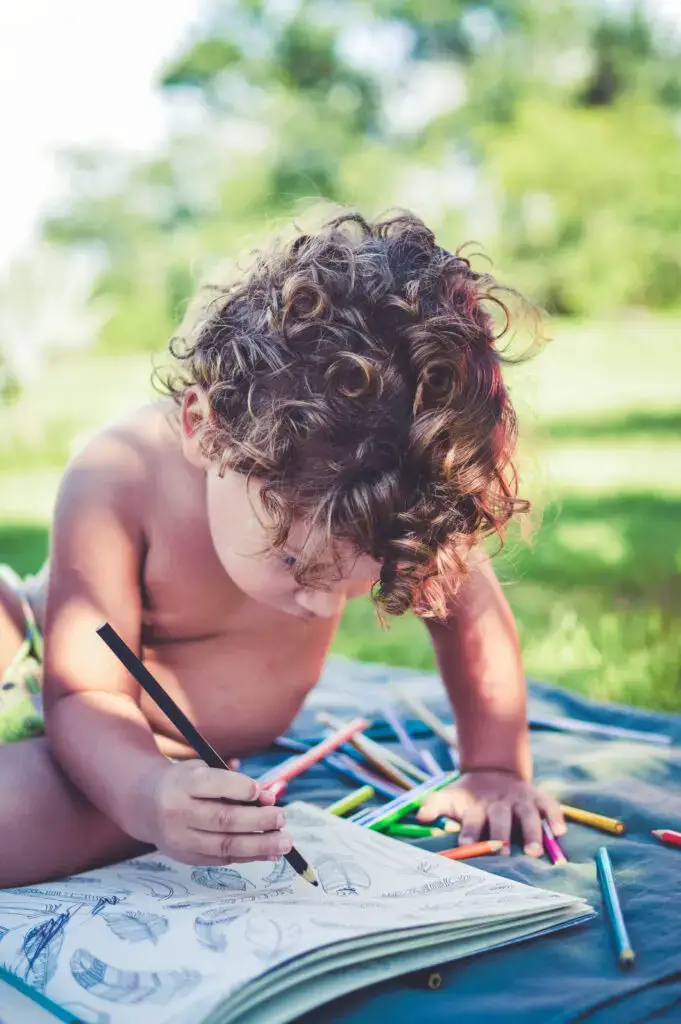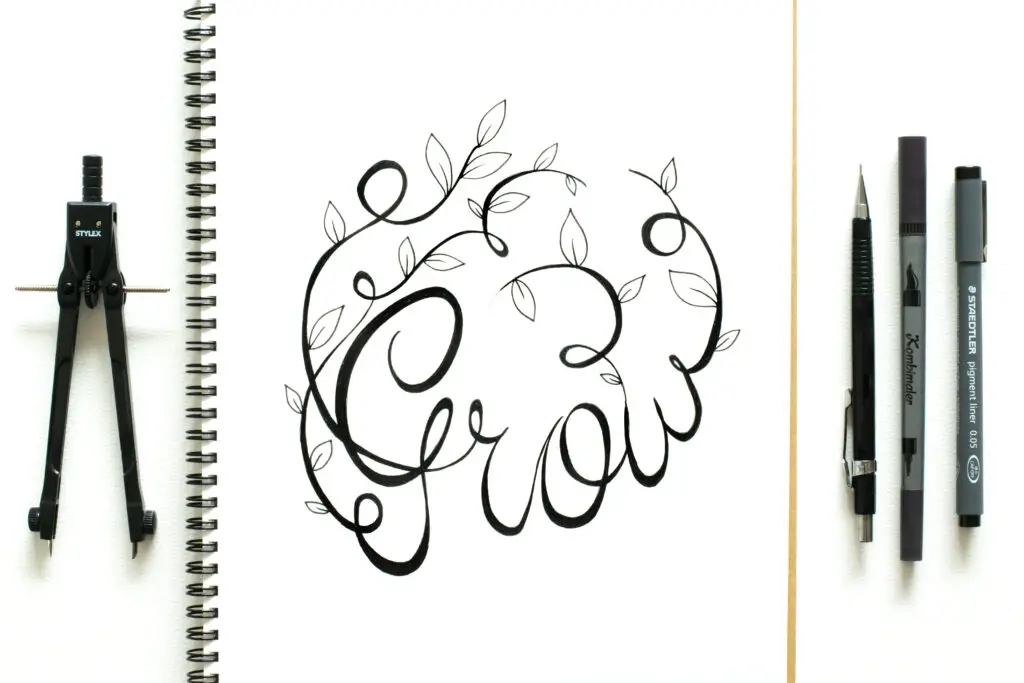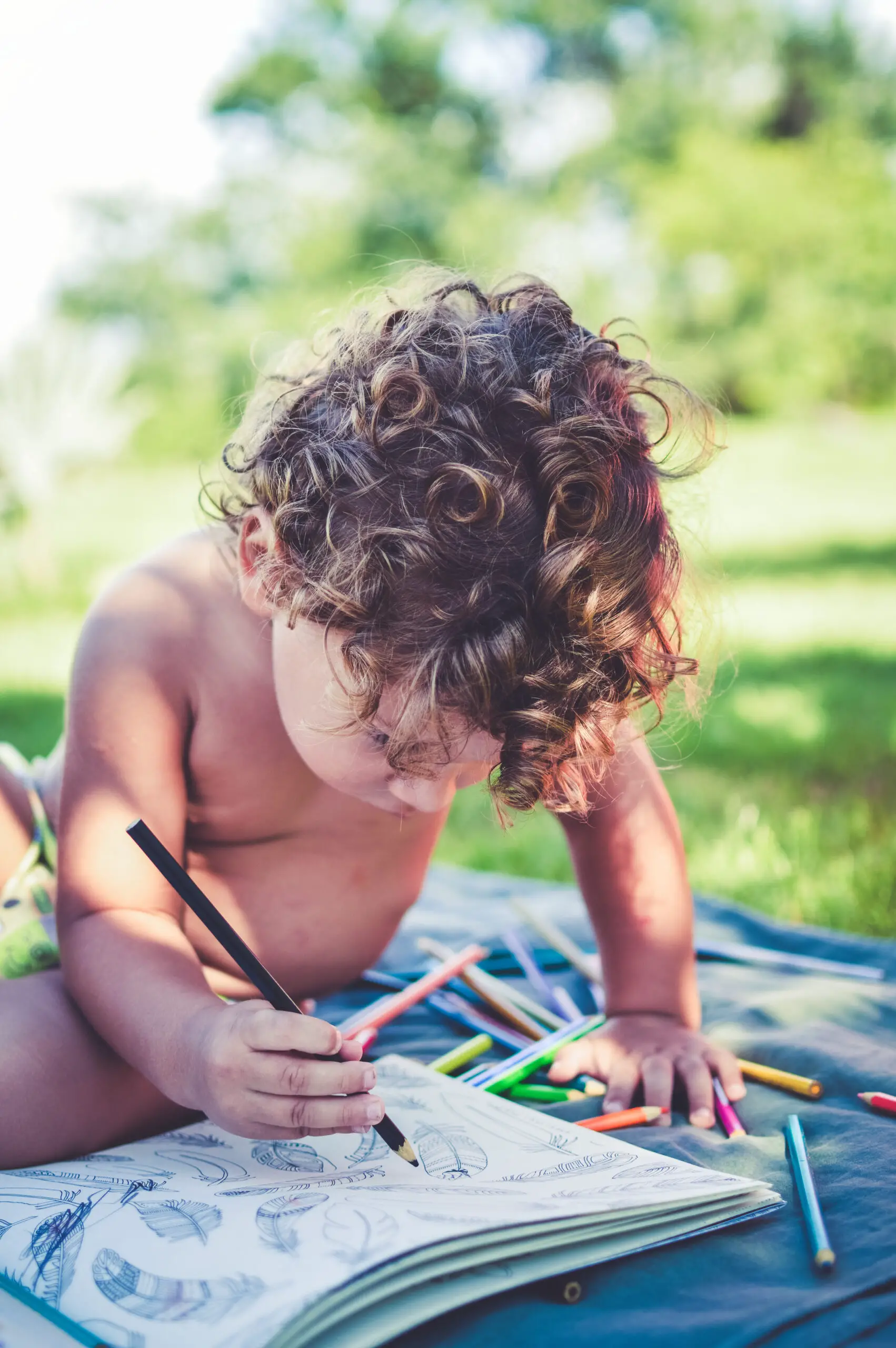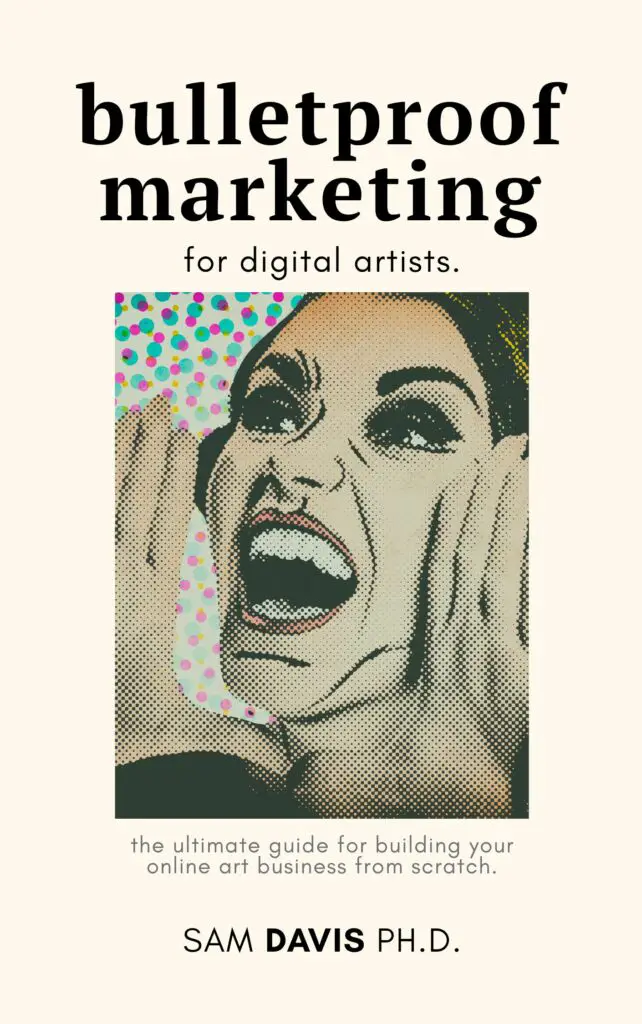Drawing is a medium not just for self-expression but also for creativity. When done right, drawing can help us unlock our minds and push us to think outside the box. It is also a tool that can help us activate our brains and come up with ideas, solve problems, and hone our skills.
But before you start drawing, you need to warm up. If you’re an artist who’s looking for inspiration or trying to find a way out of a creative rut, doing drawing warm ups could be just what you need. In this blog, we’ll talk about how drawing can be a great way to jumpstart your creativity, the benefits of drawing warm ups, and tips for creating your own drawing exercises.

Why you should warm up
Warming up before a drawing session can help to improve mental flexibility and focus. Warming up with drawing can help to create a flow of ideas, which can lead to better creativity overall. You can use a drawing exercise to experiment with new techniques and develop your drawing skills. Drawing warm ups provide a way to get your creative juices flowing without having to feel pressured to come up with something immediately. By incorporating some warming up activities into your sketching sessions, you can improve your overall drawing skills and experience increased levels of creativity.
Benefits of drawing warm ups
A drawing exercise helps you get into a creative mindset, relax your mind and body, and build up confidence in your drawing skills. Warm ups also allow you to explore different techniques and ideas quickly without fear of failure. They can be short exercises, such as line drawings or longer projects, like sketching a complete scene or character. As with any form of exercise, it's important to regularly engage in warm up exercises to help you become more creative and inspired when working on bigger projects. By incorporating warm up exercises into your routine, you can improve your drawing skills over time and achieve great results in your work.
Tips for creating your own warm-up exercises
Warm-up exercises can help jumpstart your creativity and get your creative juices flowing. These exercises typically involve drawing a series of shapes, such as circles and squares, or copying a picture or line drawing. They are often done quickly, in just a few minutes, to help you focus and energize before starting a more in-depth exercise. Before starting warm-up exercises, it is important to reflect on what kind of drawing you want to do. For example, if you are practicing drawing faces, you may want to copy a photo of an attractive person. Using references such as photographs or artwork can help spark new ideas. In addition to warm-up exercises, it is always helpful to practice regularly so that you can stay inspired and motivated.
Warm up exercise: Straight lines and parallel lines exercises
Drawing warm-ups are a great way to get your creative juices flowing and help you to develop your line work and sketching skills. Start by practicing basic shapes, such as circles, lines, ovals, and squares. A straight line will wake you up in the morning, that's for sure. Draw shapes to mix it up a little.
You can draw these shapes in different sizes and angles to get comfortable drawing them. You can also draw grids with parallel lines to practice perspective drawing or create geometric patterns of different shapes and sizes to practice your line work. Parallel lines are a great, mindless ways to start connecting your hand eye coordination to your paper.
Another way to get warmed up is by creating quick strokes of different shapes on paper to practice drawing more detailed forms. Lastly, draw organic shapes using simple strokes to get used to drawing more detailed forms. By incorporating a drawing exercise into your creative routine, you can develop your line work and sketching skills and become more confident in your art expression.
Warm up exercise: Blind contour drawing exercise
Blind contour drawing is when you don't take your pen off the paper and try to complete a shape. It's wild, it's wacky, and it's a great warm up exercise. To begin a blind contour drawing, I would start by tracing the outline of the image with my pen without lifting it from the paper.
As I move around the edges, I can focus on shapes within the main shape. For example, when it comes to the center of the image that is drawn in more detail, I can take sections one at a time and fill them in with lines carefully as I go. This way, each part of the image should come together gradually and create an accurate representation.
Warm up exercise: Circles, swirls, and loops
Warm up your wrist and hands with circles, swirls, and loops. Experiment with different angles and line weights to create interesting shapes. Use continuous lines to draw patterns and shapes that flow together. Add texture and shading for further interest. Let your imagination run wild! These simple drawing exercises are great for doodles during classes or meetings, and everything you do improves your muscle memory.
If you're looking to boost your creativity, try a drawing exercise. Drawing is a great way to exercise your brain and body, and it's also a great way to stimulate creativity. By drawing simple shapes with different angles, line weights, and textures, you can exercise your brain and body and get yourself into the creative mindset. This will help you come up with new ideas or solutions to problems more easily.
If you're looking around for ideas for drawing warm ups, try drawing circles, swirls, or loops of various shapes on paper or in a sketchbook. When you're finished, look through them for interesting angles or lines that could be used in your drawings. This will help spark ideas and help you come up with unique and creative sketches.

Warm up exercise: Miniature drawings and still-lifes
To jumpstart your creativity and unlock your creative potential, try drawing a few minutes per day. Try taking a few minutes to draw something simple like a dog or a person, or draw something more challenging like a still-life or a figure in action.
Practice drawing objects from multiple angles and perspectives, focusing on the details of the object. This will help you develop your observational and drawing skills.
Draw figures in action or focus on capturing movement. This will help you develop your artistic expression and ability to transform ideas into tangible forms. Additionally, make quick sketches of shapes, lines, and patterns. This is a great way to get started with any creative project and will help you develop your artistic ability and creativity.
Cubes, cones, and character sketches
Learn the basics of drawing with cubes, cones, and spheres. Utilize a variety of shading techniques to bring life to your drawings. You can use hatching, cross-hatching, and wash-over shading to create shadows and highlights on your sketches.
Practice gesture drawing from photos or life models for quick sketches. If you're not comfortable drawing freehand, try practicing gesture drawing to get experience drawing the human body in various poses and movements.
Create dynamic character sketches by studying anatomy and movement. Establish a pose or pose series for your character before sketching it. Start by sketching the head, then the torso, arms, legs, and any other features you want to include in your sketch. Then take time to refine each element as you go along. But of course, because this one of many warm up drawing exercises, only use cones, cubes, and other geometric shapes to create your characters.
Scaling your drawings up and down
Start with basic shapes, such as circles and ovals, and practice drawing them in different sizes. Make a really tiny box, and follow it up with a large one. How do they differ? Paying attention makes all the difference.
Practice sketching the same object from different angles. This will help you develop your observational drawing skills and improve your accuracy.
Develop your skills by focusing on details such as texture and shading. Experiment with abstract shapes, lines, and curves to spark creativity. This will help you break out of familiar creative ruts and develop a diverse array of artistic ideas. By practicing these warm-up activities regularly, you can increase your creativity and overall mastery of drawing techniques.
Tips for getting the most out of your drawing exercise sessions
Set a time limit for your warm-up sessions. You can't spend 45 minutes warming up then forget to actually to do your normal art.
Choose a specific subject or topic to draw. Pick a daily or weekly theme for your warm ups. Maybe it's straight lines, maybe it's Pikachu. Only you know.
Experiment with different mediums, such as pencil, ink, or watercolour. Try drawing in different environments and stances, as well as using different tools and materials.
Incorporate elements of playfulness and surprise into your warm-up sessions. Try sketching with a playful attitude, or drawing an object in a way that is playful and unexpected.
Take breaks to reassess your progress or start fresh with a new exercise. Take breaks when you need them, whether it's to walk around the studio or take a break from drawing for awhile. This will help keep your creative juices flowing and help you get the most out of your warm-up sessions.
Setting achievable goals for your warm up sessions
Warm up drawing sessions are a great way to jumpstart your creativity. It's important to set achievable goals for each session, such as improving your observational skills or learning to draw in a new style. Warm up drawing sessions are also a great way to practice the basics, such as perspective and proportions, before moving on to more complex subjects.
It's important to challenge yourself by using different mediums and tools, such as charcoal or markers, to push your skills even further. Finally, don't forget to have fun and let go of any expectations you may have for yourself. By setting realistic goals and practicing the basics before moving on to more challenging concepts, you can improve your creative output over time.
Incorporating positive self-talk into your warm ups
A drawing warm up session can be a great way to improve your drawing skills and increase your confidence as a artist. When participating in warm up sessions, it is important to remember to stay focused on the present moment and to avoid over-stressing about the outcome of the session.
It is also important to use positive affirmations and encouraging phrases during warm up sessions, such as telling yourself that you can draw anything and that drawing feels good. By focusing on the process rather than the outcome, you can reduce any feelings of pressure or stress during warm up sessions.
Mixing up your techniques can help boost creativity and explore different subjects. For instance, you can try drawing from different positions or using various materials, such as paper or clay. Taking regular breaks can also help refresh your mind and keep your creative juices flowing.
Frequently Asked Questions
Are there any techniques that can be used to make drawing warm-ups more interesting?
Yes! There are a few techniques that you can use to make drawing warm-ups more interesting. Firstly, experiment with different mediums like watercolor, ink, charcoal, and pencil. This way, you can explore the various textures and depths of each medium, increasing your skillset in the process.
Secondly, try drawing from different sources such as photos, objects or even just your imagination. This will give you more variation and force you to think outside of the box. Thirdly, change up the scale of your drawings. This will challenge you to think about proportions differently and explore new angles.
Fourthly, use a limited color palette for each drawing session. By restricting yourself to only a few colors, you can practice how to utilize color theory more effectively and learn how to mix colors better. Lastly, try to draw something randomly without any planning. This will push you out of your comfort zone and help to increase your creativity by creating something unique and unexpected.
What are the benefits of completing drawing warm-ups on a regular basis?
Completing drawing warm-ups on a regular basis can help you hone a variety of skills. Regular sketching exercises can help to relax and focus the mind, allowing for creative ideas to flow more freely. In addition, completing drawing warm-ups regularly will also help build up confidence in your drawing skills as well as practice and refine basic techniques and forms.
Moreover, by regularly completing drawing warm-ups, you will also better understand the principles of composition and design. This is because sketching exercises give you an opportunity to experiment with different shapes, lines, textures, and other elements that are essential for creating successful works of art. Therefore, regular drawing warm-ups can be an essential part of your artistic practice.
What are some effective drawing warm-up exercises?
If you're looking for some effective drawing warm-up exercises, then here are a few that you can try:
1. Start your sketching practice with simpler exercises such as sketching basic shapes or copying from photographs. This way, you'll quickly get into the groove of sketching and be able to create more complex images in no time at all.
2. Explore different mediums such as charcoal, watercolor, and markers to expand your skillset and challenge yourself in new ways.
3. Make it a habit of sketching something everyday. Create a sketchbook so that you can observe your progress over time and track which areas need improvement.
4. It's also very important to practice drawing from life, so look around and sketch the objects that you see like flowers, trees, buildings, people etc. This will help you hone your observation skills and learn how to capture details with accuracy.
5. Push yourself out of your comfort zone by trying contour line drawings or blind drawings wherein you don't look at the paper while drawing or sketching a particular object continuously for a certain amount of time.
Conclusion
Drawing warm ups are a great way to get your creative juices flowing. They can help you find inspiration, focus, and motivation to draw. They also help you learn how to draw accurately and produce better artwork overall.
Drawing warm ups can be as simple as sketching shapes or objects that you see around you or drawing things that inspire you. You can also create your own exercises by drawing random objects or subjects that inspire you. Want more? Check out our other drawing blogs to try this weekend!
-
Ten Ways Artists Can Celebrate Their Successes at the End of 2023
The year 2023 has been a whirlwind of creativity and artistic exploration. As we approach the year-end, it's time for artists to take a step back, reflect on their accomplishments, and celebrate their successes. Here are ten ways you can do just that. 1. Host a Virtual Art Show Celebrate your artistic journey by hosting…
-
To Stick or Not to Stick: The Stickers on Laptop Debate
Is it safe to put stickers on your laptop? Yes, it is generally safe to put stickers on your laptop. However, it's important to be cautious and choose decals that are specifically designed for laptops to avoid any damage or residue. Additionally, make sure not to cover any ventilation areas to prevent overheating. Are you…
-
Painting Success: Understanding the difference between painting for fun and painting for money
Discover the nuances between painting for fun and painting for money in our latest blog post. Explore the benefits, challenges, and personal fulfillment associated with each approach.
-
What stickers should I make to sell stickers online?
Looking to start a profitable sticker business? Our blog post on selling custom stickers online will help you get started! Learn how to identify niches, design eye-catching stickers & manage production costs. Start creating custom stickers that resonate with your audience today!
-
What to Sell at Craft Fairs for Maximum ROI
Maximize your craft fairs ROI by learning what to sell at craft fairs to get the most out of your investment. Get tips and advice from experts here.
-
How To Create Faster: Using AI to Streamline and Grow Your Sticker Business
Make your sticker design process faster and easier with AI! Let the latest technology help you create amazing designs quickly and easily.

